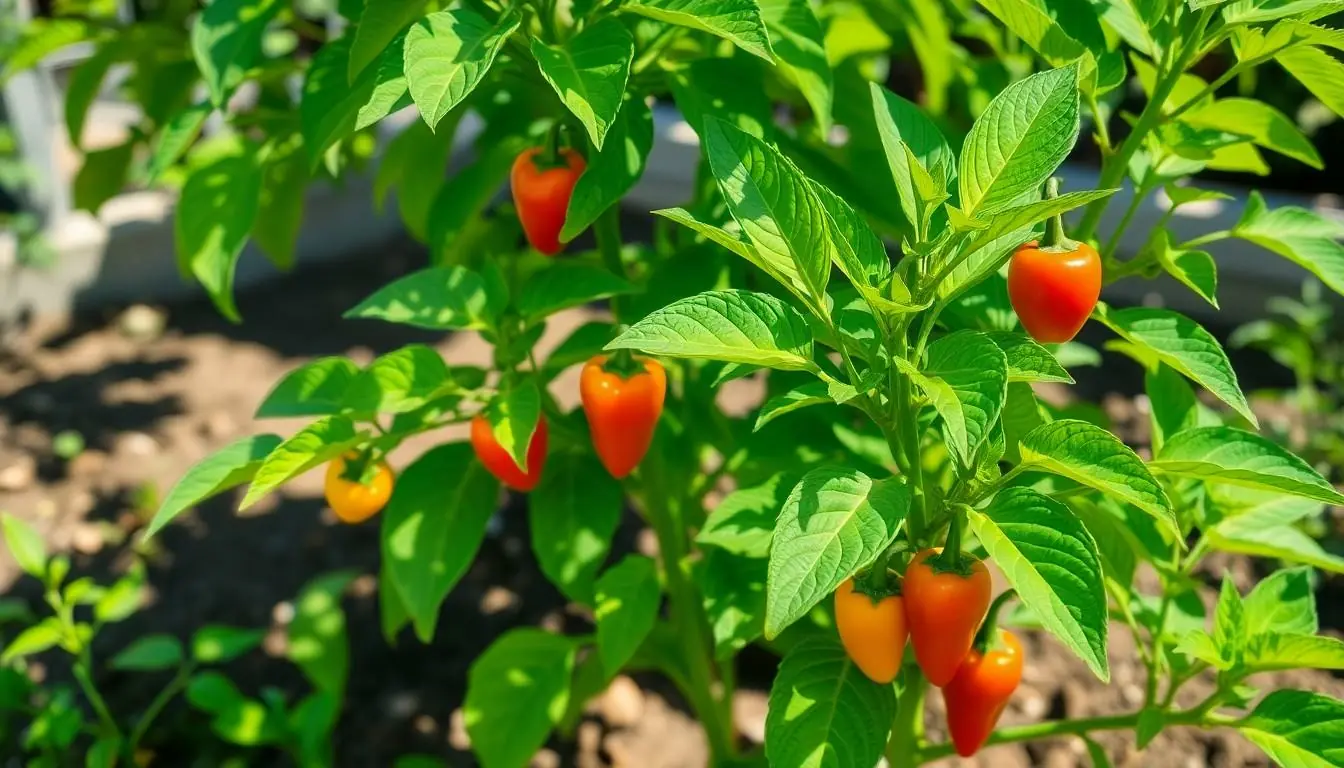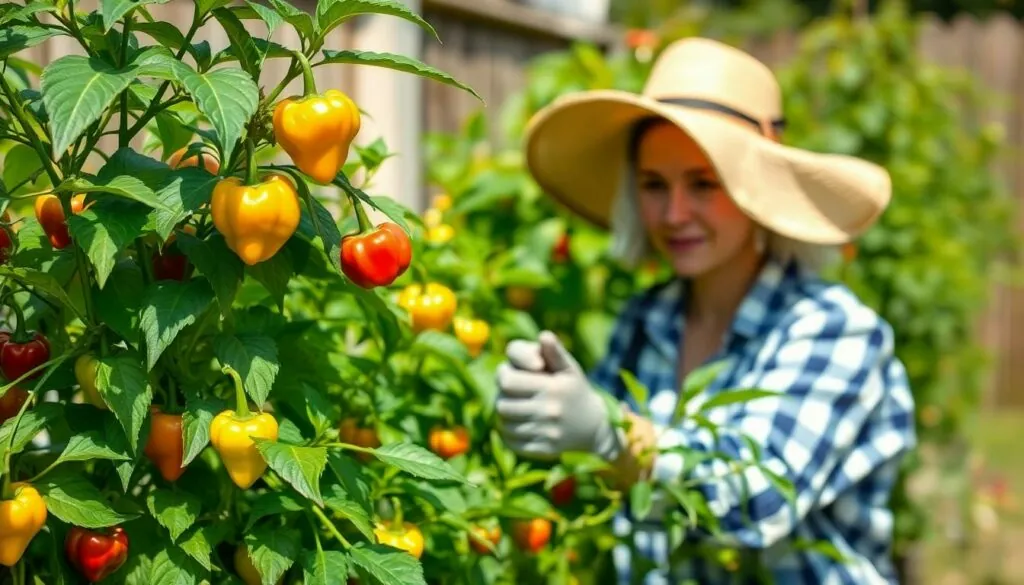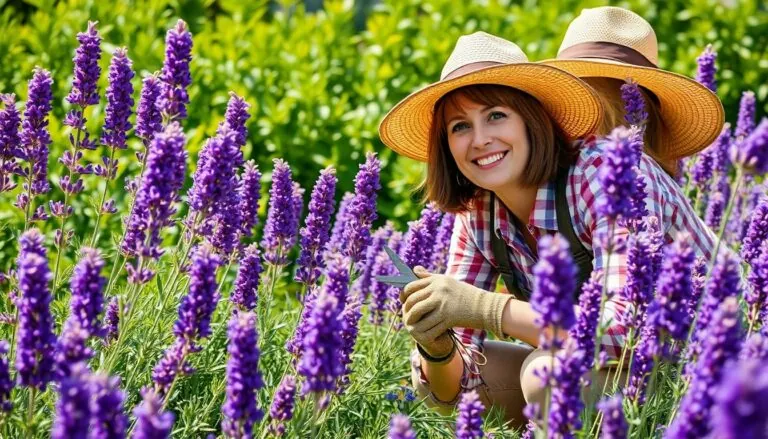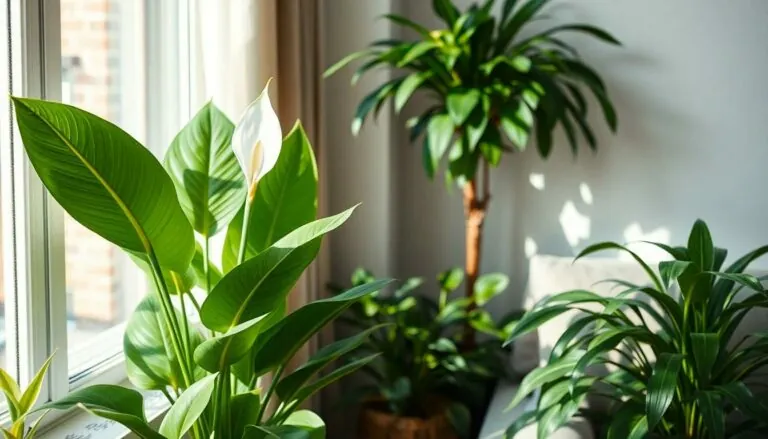Table of Contents
ToggleGrowing pepper plants can spice up any garden or kitchen, but they require a bit of TLC to thrive. These vibrant beauties aren’t just eye candy; they pack a punch in flavor and nutrition. However, neglect them, and they might just sulk in the corner like a grumpy teenager.
With the right care, pepper plants can flourish and produce a bountiful harvest. From choosing the perfect pot to mastering the art of watering, nurturing these plants can be as rewarding as enjoying a fresh salsa on taco night. So, roll up those sleeves and get ready to transform your gardening game. After all, who wouldn’t want to brag about their homegrown peppers?
Understanding Pepper Plant Care
Pepper plant care involves several key factors for successful growth. Light plays a crucial role, as pepper plants thrive in full sun, requiring at least 6 to 8 hours of direct sunlight daily. Soil quality impacts plant health, with well-draining, nutrient-rich soil essential for optimal growth.
Watering practices significantly affect pepper plants. It’s important to keep the soil consistently moist but not soggy, ensuring proper drainage to prevent root rot. Fertilization also contributes to growth; using a balanced fertilizer every 4 to 6 weeks supports healthy development and fruit production.
Temperature matters for pepper plants, as they prefer warm conditions. Nighttime temperatures below 50°F can hinder growth and yield. Pruning the plants encourages better air circulation, reducing disease risk and promoting fruit production.
Pest control remains vital in maintaining plant health. Common pests, such as aphids and spider mites, can damage foliage. Regular monitoring and the use of organic insecticidal soap can help manage infestations effectively.
Finally, harvesting peppers at the right time enhances flavor and quality. Picking peppers when they reach their mature size leads to a more intense taste and encourages continuous production. Engaging in these practices ensures pepper plants remain healthy, thriving, and productive throughout their growing season.
Essential Care Requirements

Pepper plants thrive when provided with proper care. Each essential aspect contributes to healthy growth and productivity.
Light Conditions
Pepper plants require full sun exposure, ideally six to eight hours daily. Positioning them in a south-facing location maximizes sunlight. Indirect light isn’t sufficient for optimal photosynthesis. Supplemental lighting may help in shaded areas or during overcast days. Conversely, excessive heat can cause stress, so protection from intense afternoon sun may be beneficial.
Soil Quality
Well-draining soil plays a critical role in healthy pepper plants. Soil rich in organic matter supports nutrient retention and promotes growth. A pH range of 6.0 to 6.8 encourages optimal nutrient uptake. Amendments like compost or aged manure improve soil structure and fertility. Avoiding compacted soil is essential, as it hinders root development. Freshly mixed soil combines various amendments for a balanced environment.
Watering Practices
Regular watering maintains soil moisture without waterlogging. It’s best to water deeply but infrequently, which encourages root growth. Testing soil moisture at least an inch deep helps determine when to water. Irrigation should occur in the morning to minimize evaporation and fungal diseases. During hot weather, increased frequency may be necessary to prevent wilting. Ensuring proper drainage prevents root rot, fostering a healthy environment.
Nutrient and Fertilization Tips
Proper nutrient management is essential for healthy pepper plant growth. This section outlines key strategies for choosing fertilizers and creating a feeding schedule.
Choosing the Right Fertilizer
Select a balanced fertilizer, typically with an N-P-K ratio of 5-10-10. Such a ratio supports healthy foliage and abundant fruit production. Organic options like compost or well-rotted manure provide essential nutrients while improving soil health. Look for slow-release fertilizers to ensure consistent nutrient availability throughout the growing season. Liquid fertilizers can also be effective, delivering nutrients quickly and facilitating rapid growth during crucial development stages.
Feeding Schedule
Establish a feeding schedule that aligns with the plant’s growth phases. Start fertilizing three to four weeks after planting; this timing helps establish a strong root system. Following the initial feeding, apply fertilizers every four to six weeks for optimal plant health. Monitor plant growth and adjust the feeding frequency based on their response. During flowering and fruiting stages, prioritize using fertilizers higher in phosphorus and potassium to support crop yield and quality.
Pest and Disease Management
Pest and disease management is essential for maintaining healthy pepper plants. Regular monitoring helps identify issues early and promotes a thriving garden.
Common Pests
Aphids are common pests that infest pepper plants, sucking sap and weakening the plant. Spider mites thrive in hot, dry conditions, leading to yellowing leaves and webbing on plants. Whiteflies can also disrupt growth by feeding on the undersides of leaves. Using insecticidal soap or neem oil effectively controls these pests. Handpicking larger pests, such as caterpillars, can also reduce their populations. Regularly checking foliage and surrounding areas ensures early detection and effective management.
Disease Prevention Strategies
Preventing diseases in pepper plants requires strategic planning and execution. Rotating crops reduces soil-borne pathogens and improves soil health. Incorporating organic matter enhances soil fertility and boosts plant immunity. Ensuring proper spacing between plants promotes air circulation, minimizing humidity and fungal diseases. Watering at the base of the plant prevents wet foliage, reducing the risk of leaf spot and mildew. Applying a fungicide when necessary provides additional protection against disease outbreaks. By implementing these strategies, gardeners can keep their pepper plants healthy and productive.
Seasonal Care Guidelines
During spring, gardeners should focus on acclimatizing pepper plants to outdoor conditions. Gradual exposure to sunlight prevents shock. Transplanting after the last frost date ensures healthy growth.
In summer, maintaining soil moisture becomes essential. Water deeply every 1 to 2 weeks, especially in intense heat. Applying mulch conserves moisture and regulates soil temperature, which supports strong roots.
As fall approaches, peppers may require additional support to protect from cooler temperatures. Covering plants with cloth can shield them from early frosts. Harvest mature peppers promptly to encourage continued fruiting before winter.
Winter care involves protecting plants that remain in pots. Bringing container plants indoors or placing them in a greenhouse protects them from frost. If peppers are grown outdoors, gardeners should consider end-of-season cleanup to reduce pest overwintering.
Throughout each season, monitoring for pests and diseases remains crucial. Regular inspections for aphids and spider mites help catch infestations early. Implementing organic pest control methods, like neem oil, can safeguard plants naturally.
Following these seasonal care guidelines helps ensure pepper plants thrive year-round. Healthy practices enhance growth, improve yields, and enrich the gardening experience. Each season presents unique challenges and opportunities, guiding gardeners in effective pepper plant care.
Growing pepper plants offers a fulfilling gardening experience filled with vibrant colors and delicious flavors. By providing the right conditions and consistent care, anyone can enjoy a bountiful harvest.
Regular monitoring for pests and maintaining proper soil and watering practices are essential for success. With a little effort and attention to detail, gardeners can look forward to savoring fresh peppers in their favorite dishes. Embracing the journey of nurturing these plants not only enhances one’s gardening skills but also rewards them with the joy of homegrown produce.






